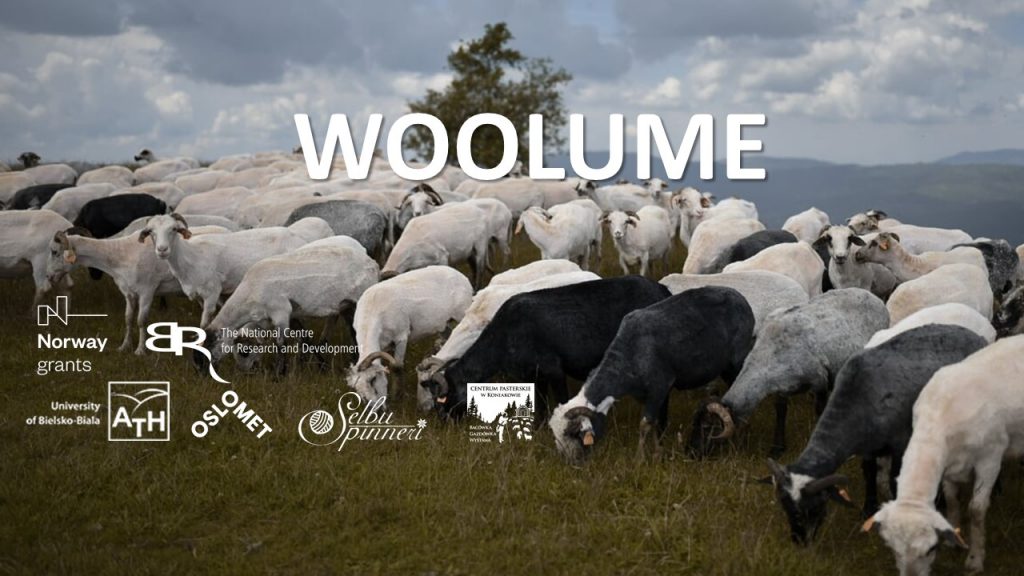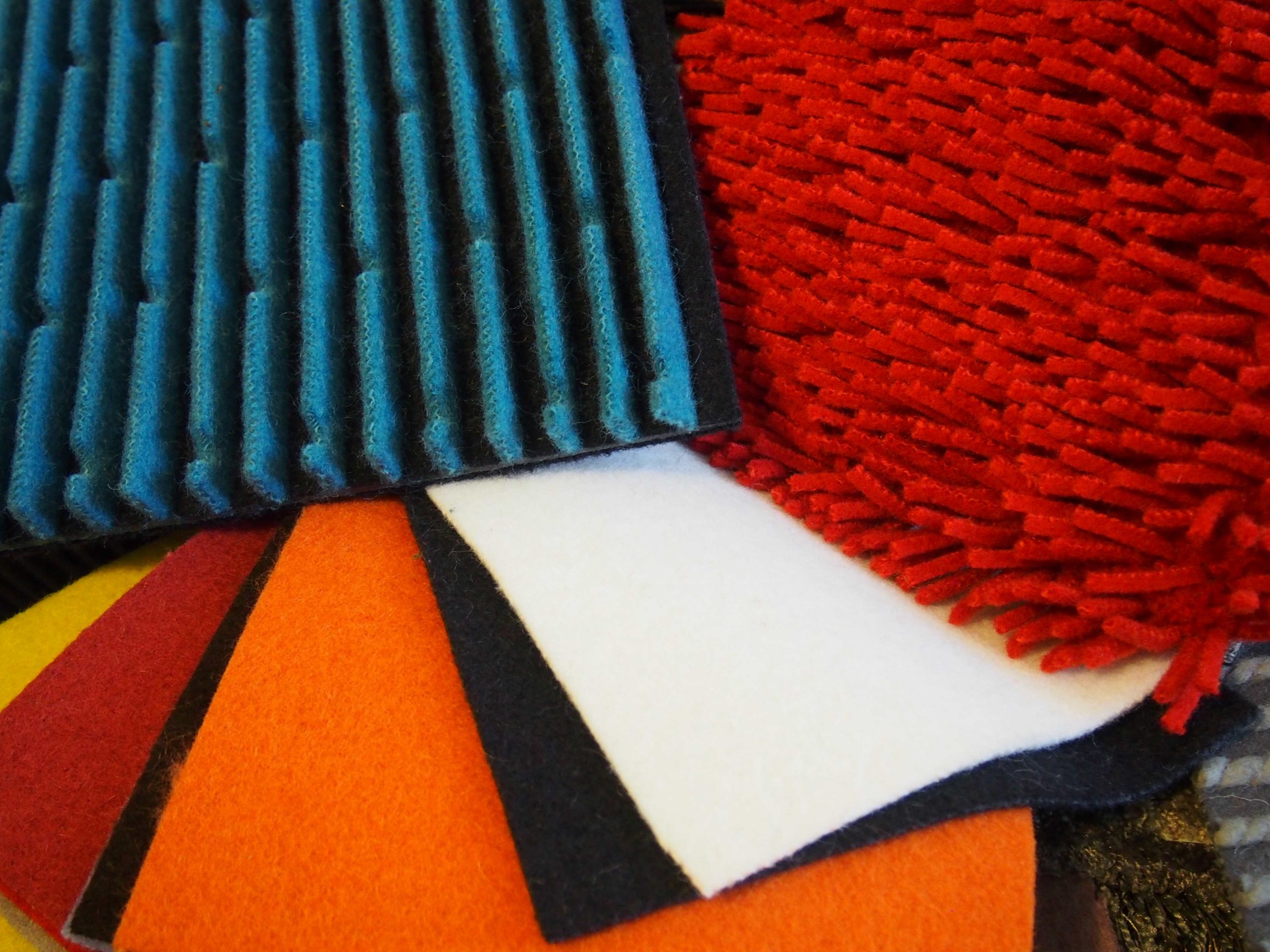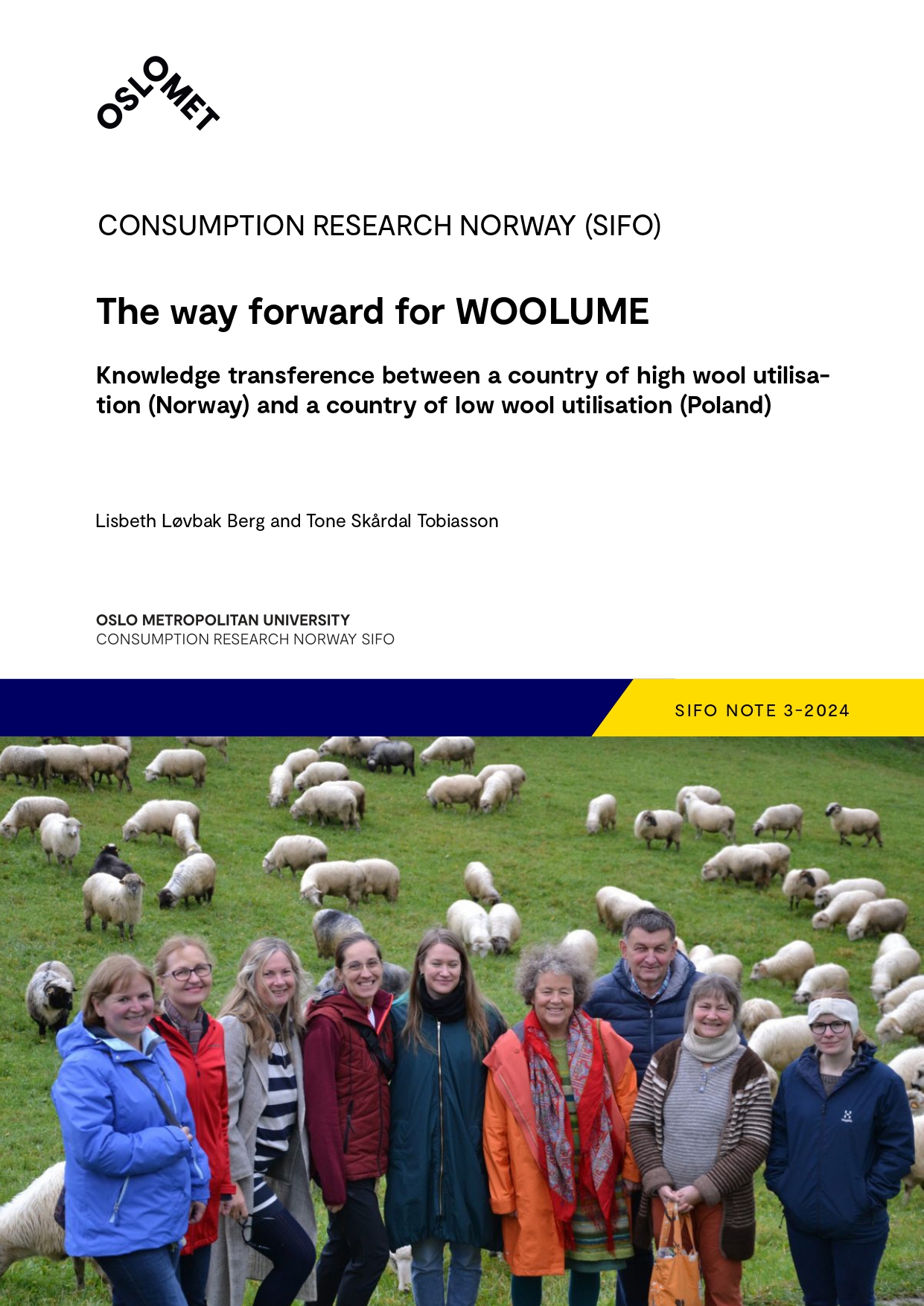WOOLUME
Polish sheep wool for improved resource utilisation and value creation
The main objective of Woolume is to explore how an under-utilized natural resource – wool from remote mountain regions – can be maximized into materials in local sustainable industry innovation systems that offer high returns on investment and contribute to an optimized, next-generation circular economy.
Mapping, understanding and further developing products from the biomass for interior sound-absorption/acoustic properties and for soil enhancement will be at opposite ends of the research scope – ensuring innovation, impact, resource and fibre-property utilisation.
The project team is composed of research, education and business experts on wool, fibre-properties, resource maximizing, value-chains, value-creation, dissemination and certainly knowledge-transfer. Alongside the practical and environmental work with the wool, a theoretical approach will aim to change the discourse on how resource utilisation leverages a more sustainable future.
The UN’s Sustainable Development Goals are at the core of the project. Through better understanding how the wool from the Polish Beskid mountains can, through grazing, optimise value-enhancement and dissemination of results and environmental consequences, Woolume aims to “up the volume” for best practices to enhance biodiversity and carbon sequestering, alongside economic gain, in a low-income agricultural region.
Participants
- Ingrun Grimstad Klepp
- Kirsi Laitala
- Anna Schytte Sigaard
- Vilde Haugrønning
- Lisbeth Løvbak Berg
- Tone Skårdal Tobiasson, nicefashion.org
- Jan Broda, University of Bielsko-Biala
- Monika Rom, University of Bielsko-Biala
- Katarzyna Kobiela-Mendrek, University of Bielsko-Biala
- Andrzej Gawlowski, University of Bielsko-Biala
- Damian Chmura, University of Bielsko-Biala
- Anna Salachna, University of Bielsko-Biala
Click here to see our Polish partners’ Woolume website (ubb.edu.pl)
Publications
- Acoustic Performance of Tufted Carpets Coupled with Underlayment Produced from Tannery Wool Waste – Materials
- The Morphology of Wool Fibers Biodegraded in Natural Conditions in Soil – Journal of Natural Fibers
- Thermoregulation and Soil Moisture Management in Strawberry Cultivation Mulched with Sheep Wool – Applied Sciences
- The way forward for WOOLUME – SIFO Project note 3-2024
- Sound Absorption of Tufted Carpets Produced from Coarse Wool of Mountain Sheep – Journal of Natural Fibers
- Utilisation of waste wool from mountain sheep as fertiliser in winter wheat cultivation – Journal of Natural Fibers
- The Contribution of Environmental and Cultural Aspects of Pastoralism in the Provision of Ecosystem Services: The Case of the Silesian Beskid Mts (Southern Poland) – Sustainability
- Natural and Sustainable? Consumers’ Textile Fiber Preferences – Fibers
- Reducing Plastic in Consumer Goods: Opportunities for Coarser Wool – Fibers
- Local, Slow and Sustainable Fashion: Wool as a Fabric for Change – Palgrave MacMillan
- WOOLUME: Potential new products from vacant wool – SIFO Report 18-2021
- WOOLUME: Mapping the market for acoustic and sound absorbing products made of wool – SIFO Report 9-2021
- The Pastoralism in the Silesian Beskids (South Poland): In the Past and Today – Book Chapter IntechOpen
- Acoustic Performance of Sound Absorbing Materials Produced from Wool of Local Mountain Sheep – Materials
- LOCAL WOOL AS A CHALLENGE FOR PRODUCERS AND USERS – Chapter in Autex2021 – Book of Abstracts

News from the project
New papers accepted in international journals
Two new papers have been accepted by international journals relating to the WOOLUME project, one on the biodegradation of wool fibers and one on the acoustic properties. The very latest is on the acoustic properties of tufted carpets coupled with the underlayment made from tannery wool waste: Acoustic Performance of Tufted Carpets Coupled…
Continue Reading New papers accepted in international journals
New article from WOOLUME: Acoustic Performance of Tufted Carpets Coupled with Underlayment Produced from Tannery Wool Waste
Authors: Jan Broda, Katarzyna Kobiela-Mendrek, Marcin Baczek and Monika Rom Abstract Sheep wool is a precious, renewable raw material that is nowadays disregarded and wasted. To better use local sources of wool, it was used to manufacture tufted carpets. The coarse wool of mountain sheep was used to form a carpet pile layer,…
New article published in the WOOLUME project
Big congrats in order! WOOLUME recently got some more good news: ‘We are pleased to inform you that “Thermoregulation and Soil Moisture Management in Strawberry Cultivation Mulched with Sheep Wool” by Jan Broda, Andrzej Gawlowski, Monika Rom, Tomasz Kukulski, Katarzyna Kobiela-Mendrek has been published in Applied Sciences and is available online’:Due to its…
Continue Reading New article published in the WOOLUME project
The way forward for WOOLUME
As the Woolume project comes to an end after three and a half fruitful years, a new project note has been published. Economics and scale are important themes, especially for moving forward with better use of local wool. As identified in other projects, things need to happen in the right order and there…


